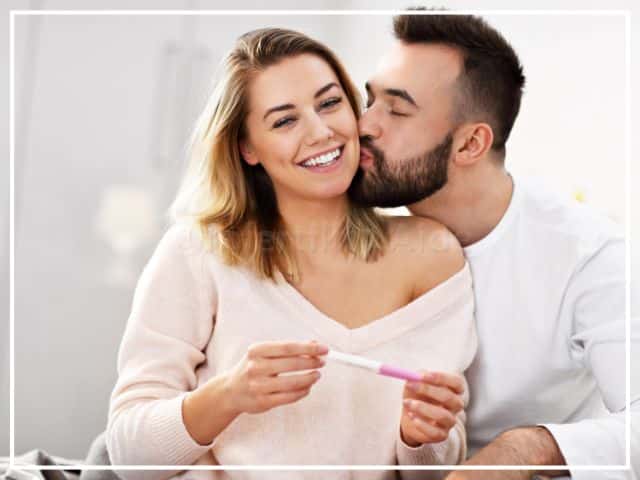In Natural cycle IVF, the egg you naturally release each month is collected and fertilized with your partner’s sperm under controlled conditions of an IVF laboratory. No drugs or hormones are used for stimulation of ovaries, unlike in conventional IVF.
The world’s first IVF baby—Louise Brown—was conceived with natural IVF but due to the lower success rates and higher number of abandoned cycles, the natural cycle treatment is hardly followed these days.
However, there are success stories of women with natural cycle IVF, after they failed several conventional cycles.

How successful is natural cycle IVF?
Japanese fertility experts shared about the number of women, all over the age of 37, who were able to achieve success with natural cycle IVF after failing several cycles with ovarian stimulations (1).
Typically, natural IVF success rates are around 7%, which may not be high but sometimes it works for women when stimulation cycles don’t work (2).
Who is a good candidate for natural IVF?
You will be eligible for natural IVF if:
- You’re over the age of 35
- You’re have PCOS or a risk of ovarian hyperstimulation syndrome (OHSS)
- Your follicle-stimulating hormone (FSH) levels are high
- You don’t respond well to stimulation and can’t produce a good number of eggs even with stimulation
- You don’t want to take hormonal drugs for financial or personal reasons
- You are young but have blocked fallopian tubes
- For ethical reasons, you do not want to produce and waste multiple embryos
Is natural cycle IVF cheaper?
Yes, natural cycle IVF is cheaper by 40%-50% since you’re not paying for stimulation medications, which make up almost half the cost of the IVF cycle.

How many eggs can you have in the natural cycle IVF?
Since you’re not stimulating the ovaries for multiple egg production, you can only retrieve one egg in a cycle of natural IVF.
How does natural cycle IVF work?
Natural IVF is a delicate treatment process, which must be performed with great precision and care.
You will be tested first to check for your natural ovulation and if you are still ovulating, there should be no problem.
The rest of the steps in natural IVF are as follows:
- Visit the clinic on day 1 of your period and schedule your scans
- You might have to visit the clinic for scan every other day until around day 12, when egg pick up will be done under anesthesia
- The same day, that egg will be fertilized with sperm from your partner, and the resultant embryo will be kept in the lab for growth
- On day 3 or day 5, the embryo transfer will be done
What are the pros and cons of natural IVF?
Benefits of natural IVF
- Safer – No hormones are administered to suppress your natural cycle and then to increase the number of eggs. You do not have to make multiple trips for dug injections, or get nausea and uneasiness with IVF drugs, and there is no risk of ovarian hyper stimulation syndrome (OHSS)— when too many eggs develop in the ovaries, making them large and painful.
- Less expensive – IVF is expensive and almost about half of its cost can be attributed to the expensive drugs. However, with natural cycle IVF you only have to pay for the doctor’s fee and the lab charges.
- Good for older women – Women in their 40s or those with low ovarian reserves do not respond very well to IVF drugs, and even after taking all those injections, the doctor is able to collect only 2-3 eggs. So, they might want to take a chance with just one egg as collected in a natural cycle IVF.
- Can be repeated sooner – Due to the effect of stimulation drugs on the body, patients of conventional IVF have to wait for 2-3 months before they can go for the next cycle of IVF. However, in natural cycle, you can repeat the treatment every consecutive month.
- AMH, FSH levels not considered – Irrespective of your AMH and FSH levels, natural cycle IVF can be performed.
Disadvantages of natural cycle IVF
- Low chances of success – Higher number of eggs and embryos means there are greater chances of success in stimulated IVF, but in natural cycle IVF success rates are relatively low.
- Failed egg collection – In a number of natural cycles no egg is collected because spontaneous ovulation can occur any time before the planned egg retrieval.
- Failure to fertilize the egg – Since there is only one egg, the failure of egg fertilization (which happens in about 10% cases) means cancellation of the cycle.
- No embryo selection possible – When the doctor has multiple embryos, he/she is able to choose the best quality ones to transfer to the womb. But in natural IVF, since we are relying on only one egg and one embryo, embryo selection is not possible and the chances of the entire cycle being wasted are much higher.
- More chances may be required – With around 8% average success rate, the chances of conceiving in a natural cycle are 1/5th as compared to a conceiving in a stimulated cycle.
To plan a natural cycle IVF with any of our leading IVF experts, get in touch. The cost of Natural cycle IVF starts $3,300.
References
- Matsuura, T., Takehara, Y., Kaijima, H., Teramoto, S., & Kato, O. (2008). Natural IVF cycles may be desirable for women with repeated failures by stimulated IVF cycles. Journal of assisted reproduction and genetics, 25(4), 163–167. https://doi.org/10.1007/s10815-008-9204-7
- Pelinck MJ, Hoek A, Simons AH, et al. Efficacy of natural cycle IVF: a review of the literature. 2002. In: Database of Abstracts of Reviews of Effects (DARE): Quality-assessed Reviews [Internet]. York (UK): Centre for Reviews and Dissemination (UK); 1995-. Available from: https://www.ncbi.nlm.nih.gov/books/NBK69177/